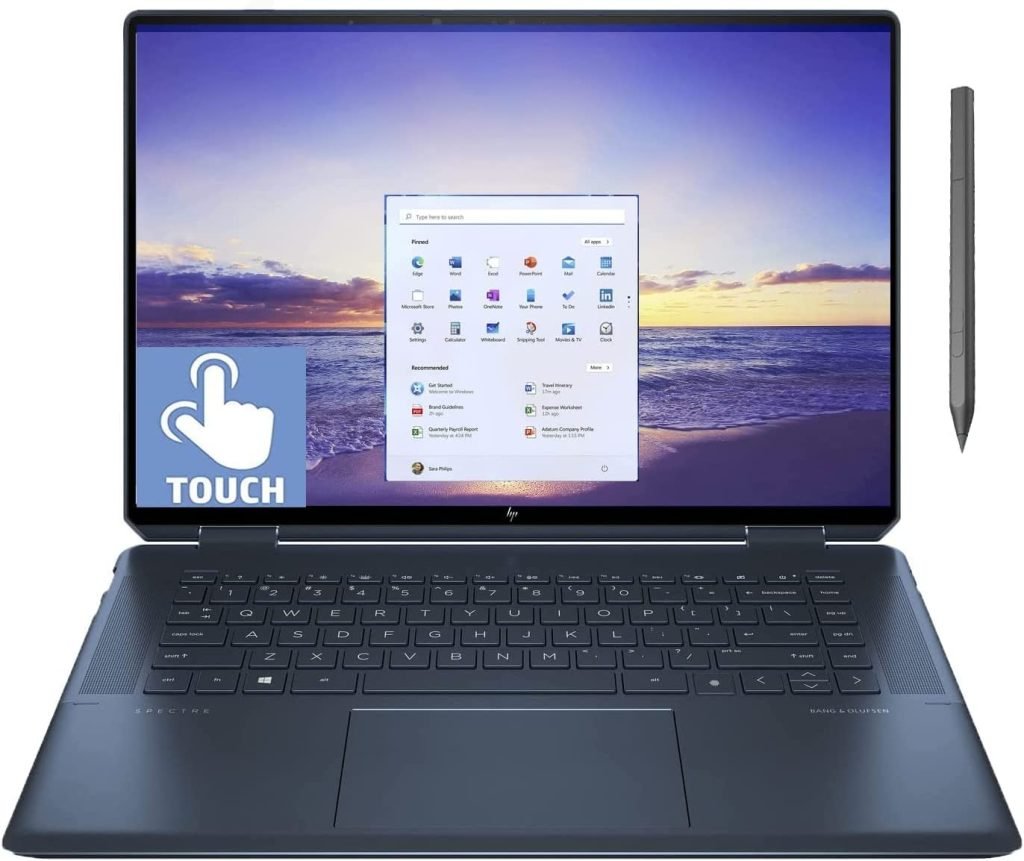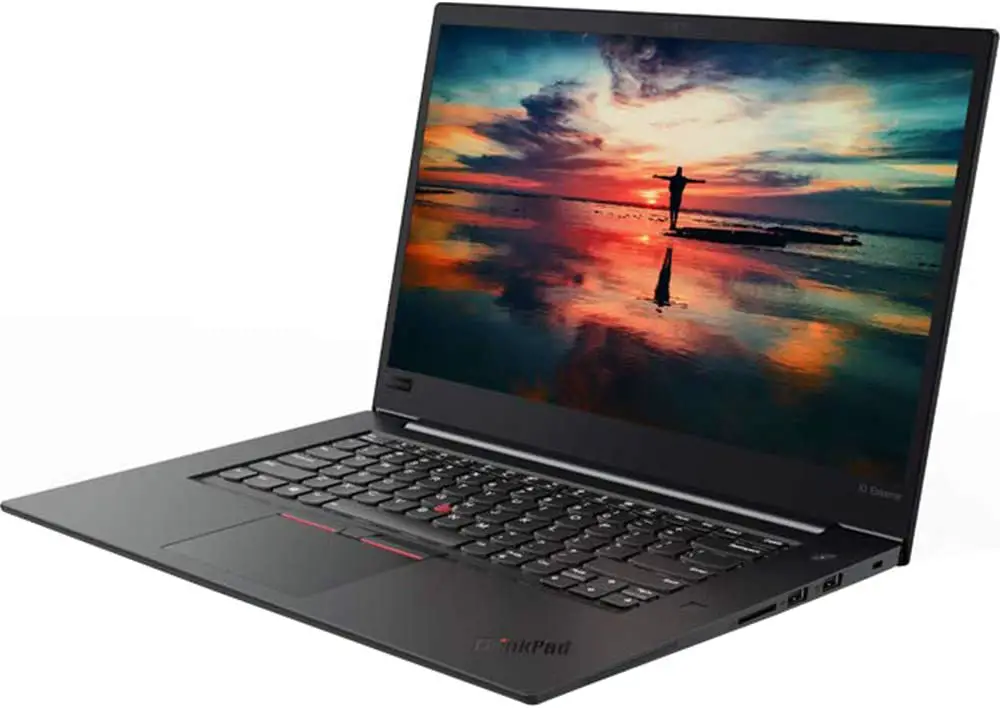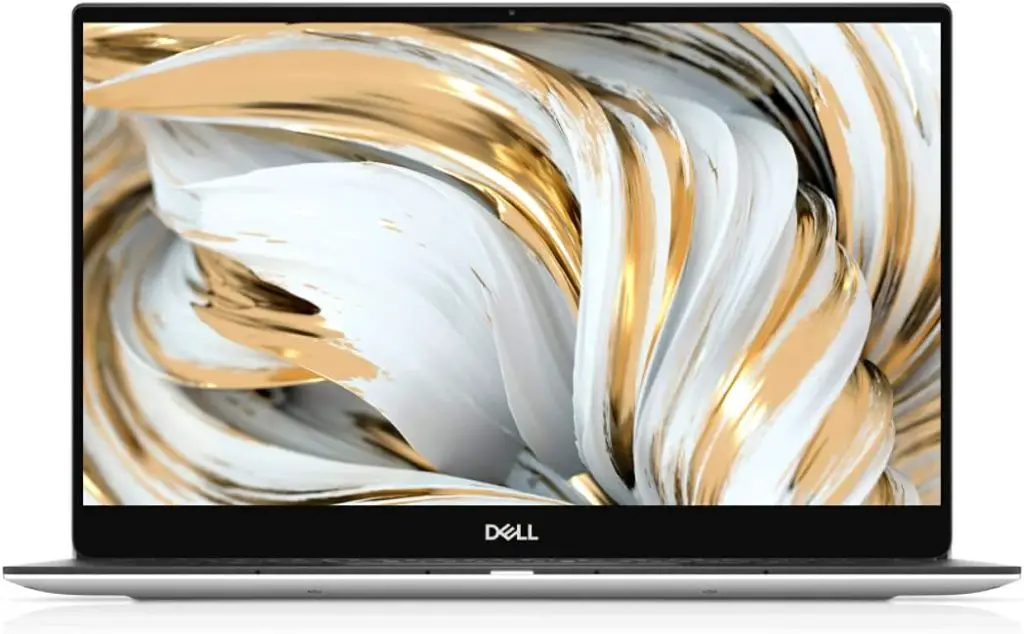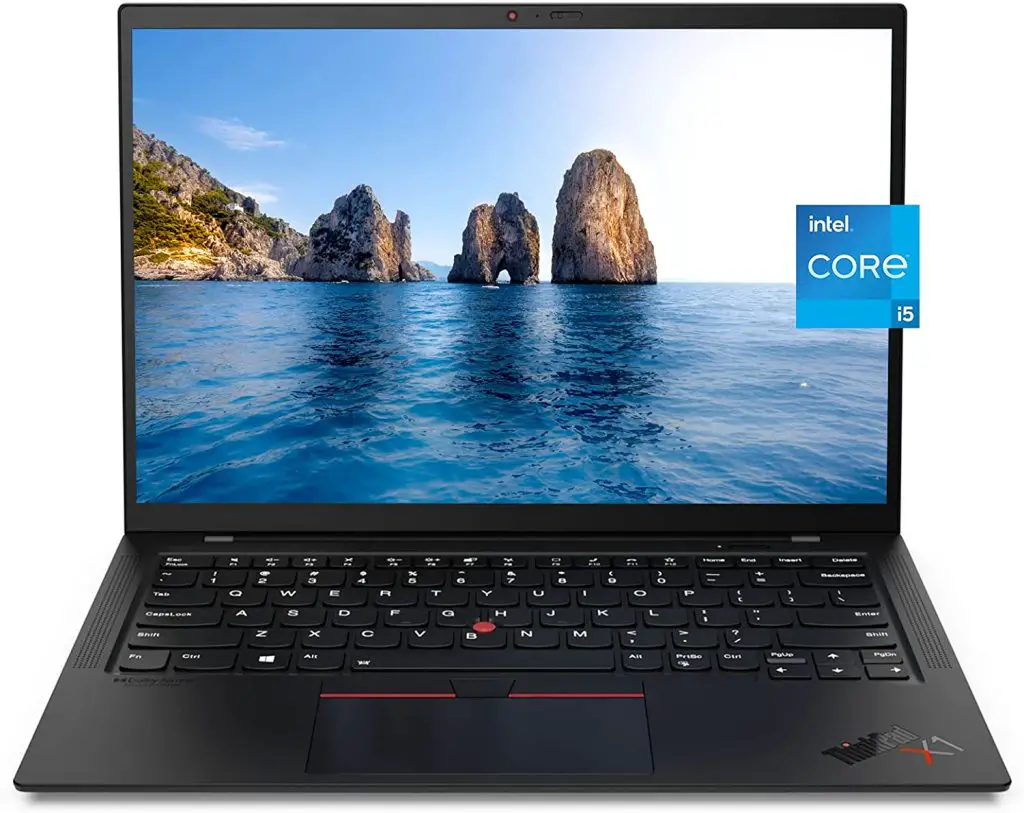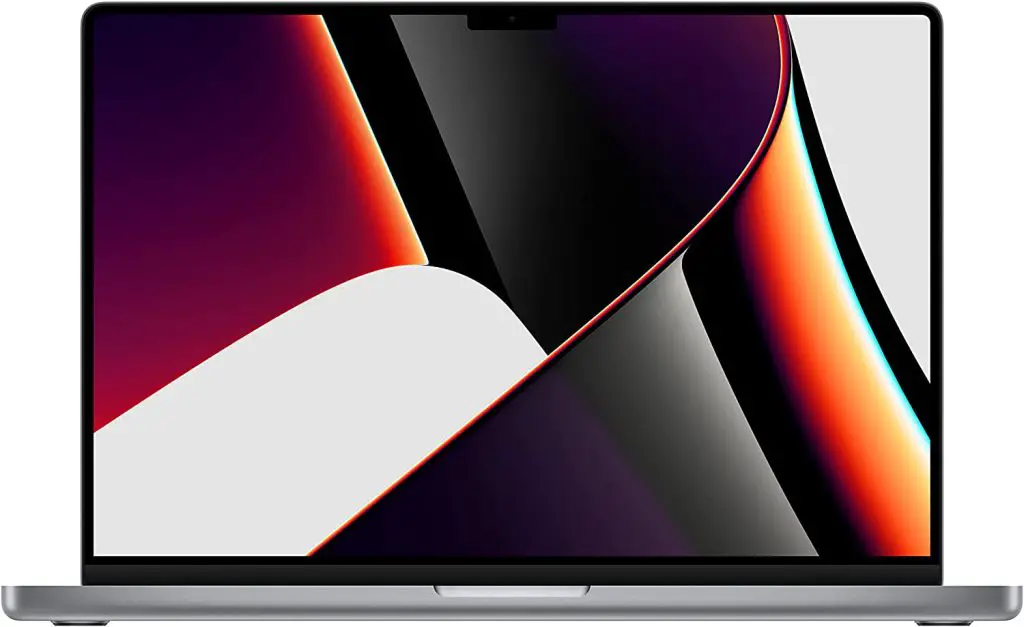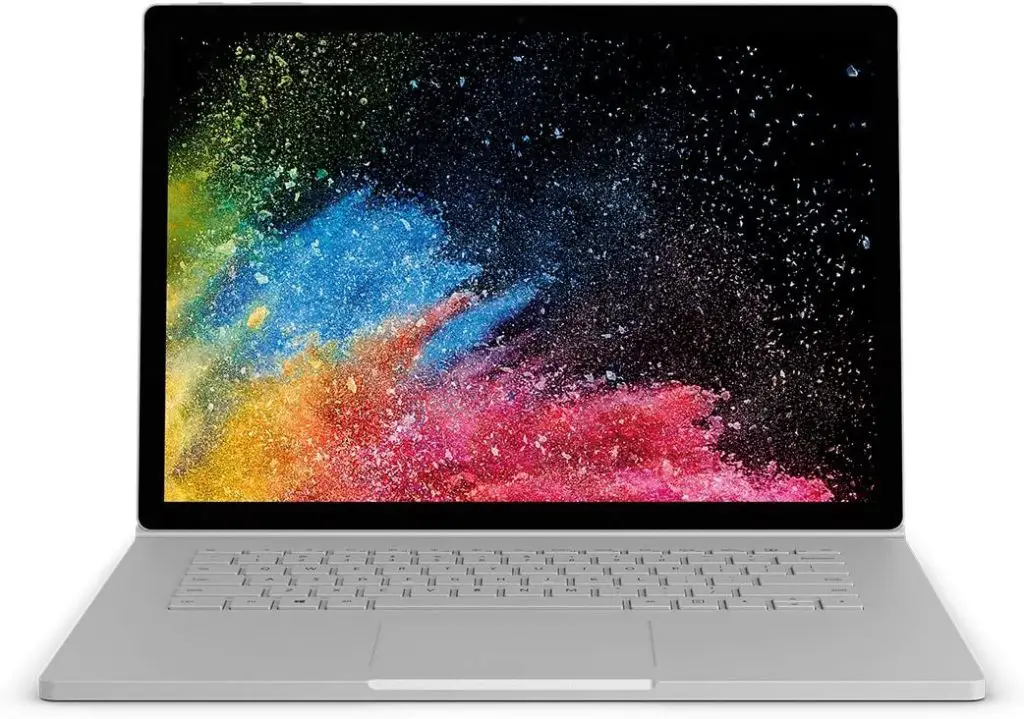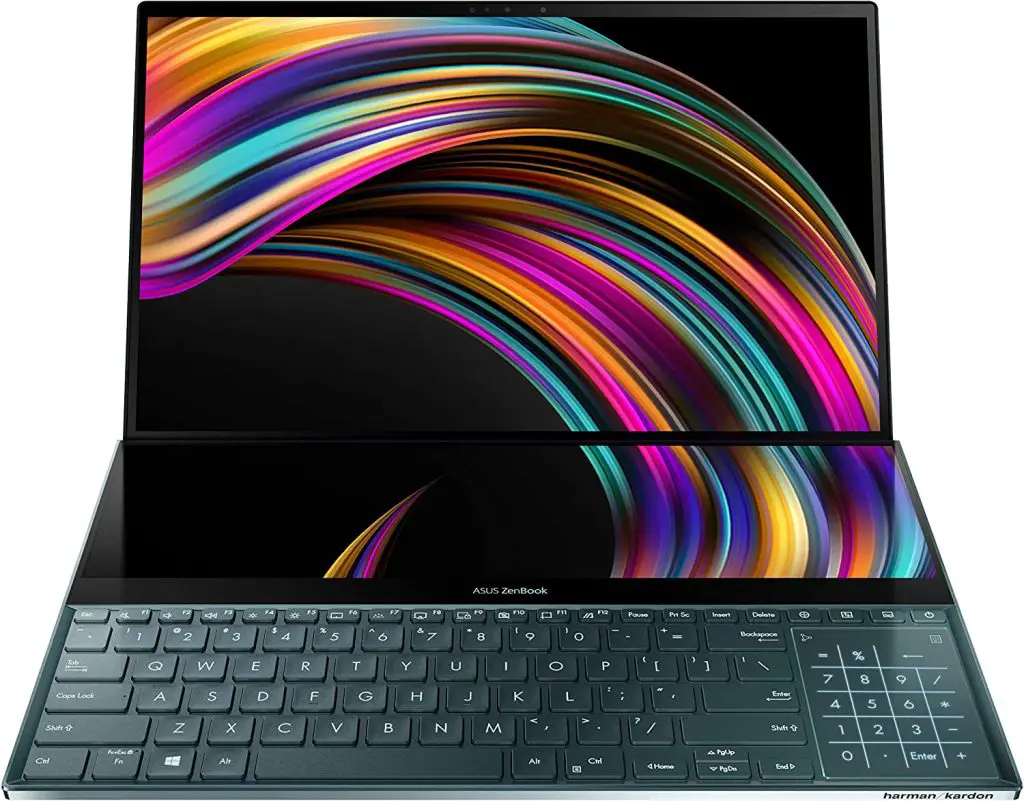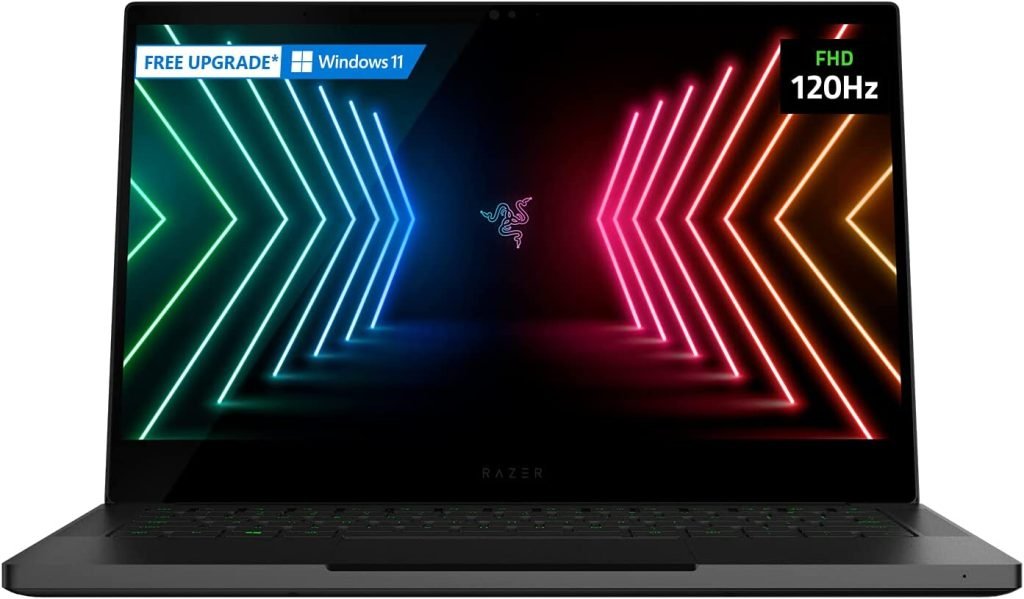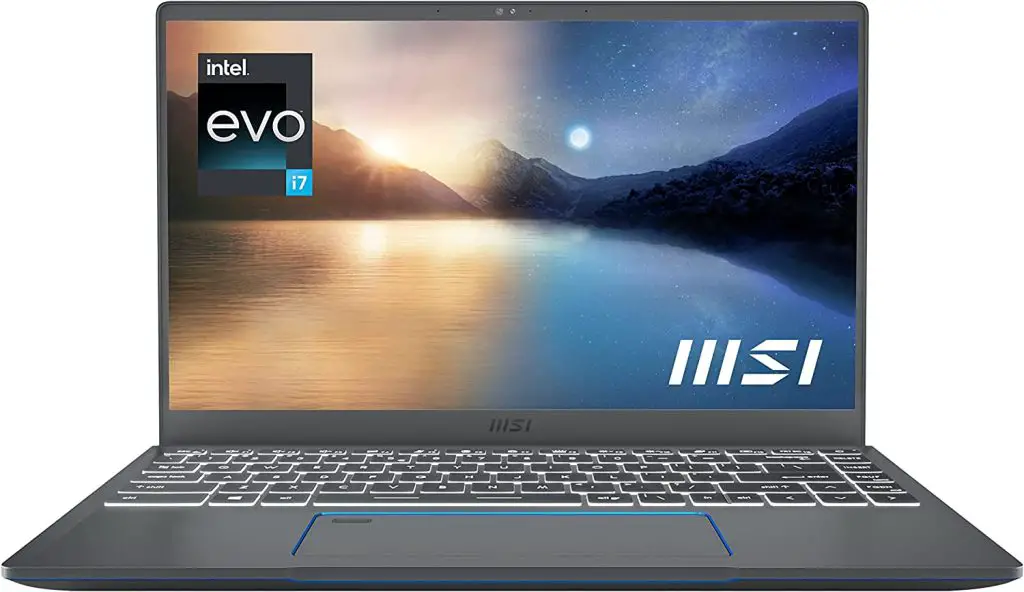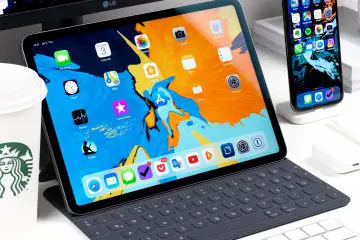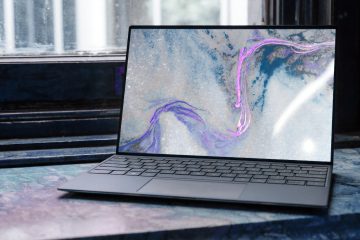Java programming is a highly popular language used for developing applications across different platforms. With its extensive use and importance, it is crucial to select a suitable laptop for Java programming. A good laptop can make a significant difference in the efficiency and productivity of a programmer.
Choosing the right laptop can be a daunting task as there are several factors to consider. Some of these factors include the processor, RAM, graphics card, display, storage, battery life, and portability. Each of these factors plays a crucial role in the performance of the laptop for Java programming.
The first factor to consider is the processor and RAM. These are essential for running complex applications and multitasking. Java programs require a powerful processor and sufficient RAM to perform efficiently. Without these, the laptop may become slow and unresponsive, which can significantly affect the programmer’s productivity.
Another important factor to consider is the graphics card and display. A good graphics card and display can enhance the programmer’s experience by providing clear and vibrant images. This is especially important for programmers who work with graphics-intensive applications.
The storage capacity is also a critical factor to consider when selecting a laptop for Java programming. As Java programs can be quite large, a laptop with ample storage capacity can save programmers from the hassle of constantly deleting files to create space.
Battery life and portability are also important factors to consider. Programmers who work on the go require a laptop with good battery life and portability. This ensures that they can work without being tethered to a power outlet.
Lastly, the brand and price of the laptop are also crucial factors to consider. Different laptop brands offer varying features and specifications at different price ranges. It is important to find a balance between quality and price to get the best value for money.
What is a programming laptop?
A programming laptop is a laptop computer that is specifically designed or chosen for use in programming tasks. It typically has certain features and specifications that make it more suitable for programming work than a standard laptop.
Some of the key features of a programming laptop include a powerful processor, plenty of RAM, fast storage, and a high-quality display. These specifications ensure that the laptop can handle multiple applications and processes simultaneously, compile code quickly, and provide a comfortable and clear view of the code.
Programming laptops often come with a comfortable keyboard and touchpad, as well as a variety of ports for connecting external devices and peripherals. They may also have a longer battery life, which is important for programming tasks that require extended periods of use.
While any laptop can technically be used for programming, a programming laptop is designed with the specific needs of programmers in mind. This means that it often has a more robust and reliable build quality than a standard laptop, as well as better heat dissipation to prevent overheating during intensive tasks.
Overall, selecting the best laptop for Java programming requires careful consideration of several factors. Without further ado, let’s have a closer look at the best laptops for programming – including for Java programers.
Best laptops for Java programming and programmers
HP Spectre x360
The HP Spectre x360 is an impressive laptop that packs a punch when it comes to performance, design, and functionality. With programmers in mind, this laptop is equipped with top-of-the-line features that make coding and development a breeze.
The 16-inch diagonal, 3K+ (3072 x 1920) multitouch-enabled IPS display is one of the standout features of the HP Spectre x360. The resolution delivers incredible detail and lifelike colors, making it easy to view your code and work for extended periods of time. The edge-to-edge glass and micro-edge design provide a sleek and modern look, while the touch feature allows for an interactive and intuitive experience.
Under the hood, the laptop is powered by an Intel Evo platform powered by 11th Generation Intel Core i7-11390H. This processor brings the perfect combination of features to make you unstoppable. It’s fast, responsive, and has best-in-class connectivity, which is crucial for programming tasks that require quick response times and multitasking abilities.
The HP Spectre x360 also comes with 16GB DDR4-3200 high-bandwidth RAM, which allows for smooth multitasking and efficient performance when running multiple applications and browser tabs simultaneously. In addition, it has a 512GB PCIe SSD for ample storage space, which is essential for storing large programming files and data.
This laptop is also packed with features that cater to programmers’ specific needs. For instance, the HP GlamCam is an intelligent 5MP camera that provides lighting correction, auto frame, and beauty mode, allowing you to focus on your work without worrying about your appearance. The HP Fast Charge feature enables you to go from 0 to 50% charge in approximately 45 minutes, ensuring that your laptop is always ready to go. The Wi-Fi 6E feature provides faster speeds and improved performance, while the built-in fingerprint reader helps protect your privacy.
In terms of connectivity, the HP Spectre x360 comes with 2 Thunderbolt 4 with USB4 Type-C 40Gbps signaling rate, 1 SuperSpeed USB Type-A 10Gbps signaling rate, 1 HDMI 2.0b, 1 AC smart pin, and 1 headphone/microphone combo. This makes it easy to connect external devices and peripherals, allowing for a seamless workflow.
Overall, the HP Spectre x360 is a powerful and versatile laptop that is perfect for programmers who demand high-performance, a sleek design, and functionality. With its top-of-the-line features and specifications, this laptop is a great investment for anyone looking to upgrade their programming setup.
Specifications
- Screen Size: 16 inches diagonal
- Display: 3K+ (3072 x 1920) multitouch-enabled IPS with edge-to-edge glass and micro-edge design
- Processor: Intel Evo platform powered by 11th Generation Intel Core i7-11390H
- RAM: 16GB DDR4-3200 high-bandwidth RAM
- Storage: 512GB PCIe SSD
- Operating System: Windows 11 Home
- Graphics: Intel Iris Xe Graphics with integrated card description
- Connectivity: 2 Thunderbolt 4 with USB4 Type-C 40Gbps signaling rate, 1 SuperSpeed USB Type-A 10Gbps signaling rate, 1 HDMI 2.0b, 1 AC smart pin, and 1 headphone/microphone combo
- Features: HP GlamCam (intelligent 5MP camera with lighting correction, auto frame, and beauty mode), HP Fast Charge, Wi-Fi 6E, walk away recognition, attention tracking, shoulder surfing protection, privacy camera shutter, mute mic button, and built-in fingerprint reader.
Pros
- Powerful processor: The HP Spectre x360 is powered by the 11th Generation Intel Core i7-11390H, which is a powerful processor that can handle heavy-duty tasks.
- Large and high-quality display: With a 16-inch diagonal, 3K+ (3072 x 1920) multitouch-enabled IPS display, the HP Spectre x360 delivers incredible details and lifelike colors. The edge-to-edge glass and micro-edge design add to the viewing experience.
- Fast performance: The laptop comes with 16GB DDR4-3200 high-bandwidth RAM and 512GB PCIe SSD for ample storage space. This allows for smooth running of multiple applications and browser tabs all at once.
- Flexible design: The HP Spectre x360 is a 2-in-1 laptop with a 360-degree hinge that allows for flexible use as a laptop, tablet, or tent mode.
- Great features: The laptop has many useful features, such as HP GlamCam, HP Fast Charge, Wi-Fi 6E, walk away recognition, attention tracking, shoulder surfing protection, privacy camera shutter, mute mic button, and built-in fingerprint reader.
Cons
- Expensive: The HP Spectre x360 is relatively expensive compared to other laptops in the market.
- Limited ports: The laptop has limited ports, with only 2 Thunderbolt 4 with USB4 Type-C 40Gbps signaling rate, 1 SuperSpeed USB Type-A 10Gbps signaling rate, 1 HDMI 2.0b, 1 AC smart pin, and 1 headphone/microphone combo. This may not be sufficient for some users who require more connectivity options.
- No discrete graphics card: While the Intel Iris Xe Graphics integrated card is adequate for basic graphic tasks, it may not be sufficient for more advanced graphic-intensive tasks.
Lenovo ThinkPad X1 Extreme laptop
Lenovo ThinkPad X1 Extreme is a high-end laptop designed for professionals who demand top-of-the-line performance, security, and durability. With its powerful specs and impressive features, it’s an excellent choice for programmers who require a robust machine to handle heavy coding tasks. Here’s a detailed review of this laptop from a programmer’s perspective:
The Lenovo ThinkPad X1 Extreme has a sleek and robust design that’s both stylish and professional. Its black carbon-fiber chassis and magnesium-alloy frame make it extremely durable, capable of withstanding accidental drops and harsh conditions. It weighs only 3.8 pounds, which makes it easy to carry around.
The laptop boasts a 15.6-inch LED-backlit touchscreen display with a resolution of 3840 x 2160, providing crystal-clear and vibrant images. It’s an Ultra HD 4K display with 100% Adobe color gamut, which is excellent for programmers who work with graphics and video editing.
The Lenovo ThinkPad X1 Extreme is equipped with an 8th generation Intel Core i7-8850H processor clocked at 2.6 GHz (4.3 GHz turbo boost). It has 9MB of cache memory, making it a beast when it comes to handling complex coding tasks. The laptop also comes with 32GB DDR4 RAM, which ensures speedy performance even when multitasking.
The laptop comes with a 1TB M.2 SSD TCG Opal Encryption 2, NVMe, providing ample storage for your programs, applications, and files. The SSD storage ensures lightning-fast boot-up and load times, making it perfect for programmers who need quick access to their files.
The Lenovo ThinkPad X1 Extreme comes with two graphics cards – an NVIDIA GeForce GTX 1050 Ti and an Intel UHD Graphics 630. The dedicated graphics card ensures that the laptop can handle intensive graphics and video editing work without breaking a sweat.
The laptop comes with a variety of ports and connectivity options, including two Thunderbolt 3 ports, two USB 3.1 ports, an HDMI port, an SD card reader, and an Ethernet port. The laptop also supports Wi-Fi 6 and Bluetooth 5.0, ensuring fast and reliable wireless connectivity.
Specifications
- Processor: Intel Core i7 (8th Gen) 8850H / 2.6 GHz (4.3 GHz) / 9 MB
- RAM: 32 GB DDR4 (2 x 16 GB)
- Storage: 1 TB – M.2 SSD TCG Opal Encryption 2, NVMe
- Display: 15.6″ LED backlight touchscreen 3840 x 2160 / Ultra HD 4K
- Operating System: Windows 10 Pro 64-bit
- Graphics: NVIDIA GeForce GTX 1050 Ti / Intel UHD Graphics 630
- Screen size: 15.6 inches
- Processor speed: 2.6 GHz
- Hard drive interface: Solid State
- Graphics Coprocessor: NVIDIA GeForce
- Card Description: Dedicated
- Graphics Card Ram Size: 4 GB
Pros
- Impressive performance and speed
- Stunning 4K display with 100% Adobe color gamut
- Durable and lightweight design
- Ample storage with lightning-fast SSD
- Multiple ports and connectivity options
- Dual graphics cards
Cons
- Expensive price tag
- Battery life could be better
Dell XPS 13 9305
The Dell XPS 13 is a sleek and powerful laptop that’s perfect for programmers who are always on the go. This certified refurbished laptop is an excellent option for those looking for a high-quality laptop at a more affordable price. With its 11th Generation Intel Core i5-1135G7 Processor and 8GB DDR4 RAM, the Dell XPS 13 is a powerful machine that can handle complex programming tasks with ease.
The 13.3″ FHD (1920 x 1080) InfinityEdge Non-Touch display offers a stunning visual experience that’s perfect for watching videos or editing code. The Platinum Silver finish gives the laptop a professional and sophisticated look that’s perfect for business settings.
One of the standout features of the Dell XPS 13 is its Killer Wi-Fi 6 AX1650 (2 x 2) and Bluetooth 5.1 capabilities. This means that you’ll have lightning-fast internet speeds and seamless connectivity to other devices. The backlit English Keyboard with Fingerprint Reader offers a convenient and secure way to log in to your laptop, while the Win 10 Home operating system provides a user-friendly interface.
The Dell XPS 13 also features 2 Thunderbolt 4 ports with Power Delivery/DisplayPort, 1 USB 3.2 Gen 2 Type-C port with Power Delivery/DisplayPort, 1 Headset (headphone and microphone combo) port, 1 MicroSD-card slot, and 1 Wedge-shaped lock slot. This means that you’ll have plenty of options when it comes to connecting to other devices and peripherals.
One potential drawback of the Dell XPS 13 is its smaller storage capacity of 256GB. However, this can be easily remedied with an external hard drive or cloud storage.
Overall, the Dell XPS 13 is an excellent option for programmers who want a powerful and portable laptop that can handle their programming needs. With its impressive specs and sleek design, this laptop is definitely worth considering.
Specifications
- Processor: 11th Generation Intel Core i5-1135G7 Processor (8MB Cache, up to 4.2 GHz)
- Operating System: Windows 10 Home
- Memory: 8GB LPDDR4x 4267MHz RAM
- Storage: 256GB M.2 PCIe NVMe SSD
- Display: 13.3-inch Full HD (1920 x 1080) InfinityEdge non-touch display
- Graphics: Intel Iris Xe Graphics
- Wireless: Killer Wi-Fi 6 AX1650 (2 x 2) and Bluetooth 5.1
- Ports: 2 Thunderbolt 4 ports with Power Delivery/DisplayPort, 1 USB 3.2 Gen 2 Type-C port with Power Delivery/DisplayPort, 1 headphone and microphone combo port, 1 MicroSD-card slot, 1 wedge-shaped lock slot
- Keyboard: Backlit English keyboard with Fingerprint Reader
- Battery: 4-Cell 52Whr battery
- Dimensions: 11.64 x 7.82 x 0.58 inches
- Weight: 2.8 pounds
Pros
- Sleek and stylish design with slim bezels and compact size
- Powerful 11th Gen Intel Core i5 processor for efficient and fast performance
- Fast and responsive 256GB SSD storage for quick boot times and app loading
- Full HD display with vibrant colors and sharp details
- Backlit keyboard with fingerprint reader for easy and secure login
- Thunderbolt 4 ports with Power Delivery and DisplayPort for versatile connectivity options
- Certified refurbished with one-year factory warranty for peace of mind
Cons
- Non-touch display may not be suitable for some users who prefer touchscreens
- Limited RAM (8GB) may not be sufficient for heavy multitasking or demanding programs
- No dedicated graphics card may limit performance for graphics-intensive tasks like gaming or video editing
- MicroSD card slot may not be as convenient as a full-sized SD card slot for some users
- Wedge-shaped lock slot may not be compatible with all security locks
Lenovo ThinkPad X1 Carbon
The Lenovo ThinkPad X1 Carbon is a premium laptop designed for professionals who need top-notch performance and portability. With its sleek and lightweight design, this laptop is perfect for programmers who need to work on the go. It boasts an 11th Gen Intel Core i5-1135G7 processor with four cores and eight threads that can deliver a powerhouse combination of performance, responsiveness, battery life, and stunning visuals. The base clock speed of 2.4GHz can go up to a maximum boost clock of 4.2GHz. It has an 8MB cache and is built on a 10nm architecture, which makes it incredibly fast and efficient.
One of the most impressive features of this laptop is its ultra-high-frequency memory and upgraded storage. It comes with 16GB 4266MHz LPDDR4 RAM and is upgraded to a 512GB NVMe SSD. The super-fast memory and high-speed hard drive can free up your computer’s performance, reduce system lag, and improve system fluency, increasing your productivity.
The laptop has a 14-inch WUXGA (1920 x 1200) IPS anti-glare non-touch display that covers 100% of the sRGB color gamut. It has a brightness of 400 nits, LED backlight, and a narrow bezel. The screen’s 16:10 aspect ratio can display more content in portrait orientation, which is convenient for tables and browsing information. The laptop is equipped with Intel Iris Xe Graphics, a powerful integrated graphics processor that can handle all your document processing and information browsing needs.
The ThinkPad X1 Carbon laptop also comes with enhanced remote collaboration features, which makes it perfect for programmers who work with remote teams. It has Intel Wi-Fi 6 AX201 802.11AX (2 x 2), IR & 720p HD with HPD, which provides powerful network performance. Additionally, the laptop has four 360-degree far-field microphones that are combined with a high-definition camera for visual clarity. This ensures that you’re heard loud and clear during calls, improving remote collaboration.
The laptop comes with Windows 11 Pro 64 Bit, which is perfect for expanding business needs. The built-in security features, including BitLocker, enhance data protection and privacy. The remote desktop lets you work on pending projects from virtually anywhere. Windows 11 Pro features intuitive dashboards and single sign-on for a seamless user experience.
Pros
- Powerful performance: With its 11th Gen Intel Core i5 processor, this laptop is capable of handling even the most demanding workloads with ease. It has a base clock of 2.4GHz and can boost up to 4.2GHz, which makes it a powerhouse in terms of performance.
- High-quality display: The 14-inch WUXGA IPS display is anti-glare, non-touch, and has a resolution of 1920 x 1200 pixels. It has a 16:10 aspect ratio, which is great for coding and browsing information, and it covers 100% of the sRGB color gamut, which ensures accurate and vibrant colors.
- Great graphics performance: The Intel Iris Xe Graphics coprocessor is capable of handling all your document processing and information browsing needs with ease.
- Enhanced remote collaboration: The laptop is equipped with Wi-Fi 6 AX201 802.11AX (2 x 2), IR & 720p HD with HPD, which ensures that you have powerful network performance and crystal clear audio and visual clarity during remote collaboration.
- Windows 11 Pro: The built-in security features, including BitLocker, enhance data protection and privacy, while the remote desktop lets you work on pending projects from virtually anywhere. Windows 11 Pro features intuitive dashboards and single sign-on for a seamless user experience.
Cons
- No dedicated graphics card: While the Intel Iris Xe Graphics coprocessor is great for document processing and information browsing, it may not be suitable for more demanding tasks like video editing or gaming.
- No touchscreen: Some programmers prefer to use a touchscreen for certain tasks, and the lack of a touchscreen may be a drawback for them.
- Expensive: The Lenovo ThinkPad X1 Carbon laptop is a premium laptop, and its price may be a bit high for some programmers who are on a budget.
Apple MacBook Pro M1
The Apple MacBook Pro M1 is a high-performance laptop that is designed for programmers and other power users. With its 16.2-inch display, 512GB hard disk, and 16GB RAM, this laptop offers plenty of storage and performance to handle even the most demanding tasks.
One of the standout features of the MacBook Pro M1 is the Apple M1 Pro or M1 Max chip. This chip provides a massive leap in CPU, GPU, and machine learning performance. With up to a 10-core CPU, this laptop can deliver up to 2x faster performance to help you fly through pro workflows quicker than ever. Additionally, the 32-core GPU provides up to 4x faster performance for graphics-intensive apps and games. The 16-core Neural Engine also ensures that you get up to 5x faster machine learning performance.
In addition to its impressive performance, the MacBook Pro M1 also offers longer battery life. With up to 21 hours of battery life, this laptop is perfect for long work sessions or on-the-go productivity. The laptop is also equipped with up to 64GB of unified memory, which ensures that everything you do is fast and fluid.
The MacBook Pro M1 also offers up to 8TB of superfast SSD storage, which launches apps and opens files in an instant. This ensures that you can work quickly and efficiently, without any lag or delay.
Overall, the Apple MacBook Pro M1 is an excellent choice for programmers and other power users who demand high performance and reliability. Its combination of powerful hardware and long battery life make it a great option for anyone who needs a reliable laptop for work or personal use.
Specifications
- Screen Size: 16.2 inches
- Hard Disk Size: 512 GB
- RAM Memory Installed Size: 16 GB
- Operating System: Mac OS
- Graphics Card Description: Integrated
- Graphics Coprocessor: M1 Pro
- Apple M1 Pro or M1 Max chip
- Up to 10-core CPU with up to 2.5x faster performance than the previous generation
- 16-core Neural Engine for up to 5x faster machine learning performance
- Up to 64GB of unified memory
- Up to 8TB of superfast SSD storage
- Up to 21 hours of battery life
- SDXC card slot
- HDMI port
- Thunderbolt 4 (USB-C) ports with support for charging, DisplayPort, and Thunderbolt 3 (up to 40Gb/s)
- 3.5mm headphone jack
- 16.2-inch Retina display with True Tone technology
- Resolution of 3072×1920 pixels
- P3 wide color gamut
- 500 nits of brightness
Pros
- Incredible performance due to the M1 Pro or M1 Max chip, delivering up to 2x faster CPU and up to 4x faster GPU performance
- 16-core Neural Engine for up to 5x faster machine learning performance
- Up to 64GB of unified memory, making everything fast and fluid
- Up to 8TB of superfast SSD storage, allowing for quick app launches and file opening
- Longer battery life, up to 21 hours, for all-day use without needing to charge
- The 16.2-inch screen is vibrant and large enough to work on multiple projects simultaneously
- The integrated graphics card provides a decent gaming experience for a laptop
Cons
- The high price tag may not be affordable for everyone
- Limited connectivity with only Thunderbolt 4 ports, requiring adapters for legacy USB devices
- Mac OS may not be the preferred operating system for some programmers who prefer Windows or Linux
- The keyboard may take some getting used to for those who are accustomed to traditional keyboards
- The lack of touch screen functionality may be a drawback for those who prefer to use touch controls.
Microsoft Surface Book 2
The Microsoft Surface Book 2 laptop is a powerful device with features that are especially useful for programmers. With a sleek design and top-of-the-line hardware, this laptop is ideal for those who need to work on multiple projects at once and require a powerful device to support their work.
One of the standout features of the Surface Book 2 is its 8th generation Intel Quad Core i7 processor, which is able to deliver incredible performance and speed. With 4.2 GHz clock speed, this laptop can handle even the most demanding software and applications with ease. The laptop also features 16 GB of RAM and 256 GB of storage, which is enough to handle multiple tasks at the same time and store a large amount of data.
The Surface Book 2 also features an NVIDIA GeForce GTX 1060 discrete GPU with 6GB GDDR5 Graphics Memory, which provides enhanced graphics performance, making it perfect for programmers who work with graphic-intensive software or applications.
One of the key advantages of the Surface Book 2 is its vibrant PixelSense display, which is now available in a new 15-inch touchscreen variant. The display has a resolution of 3000 x 2000 pixels, which can be increased to 3260×2160 pixels. This ensures that images and videos are crisp, clear, and detailed. Additionally, the laptop also comes with an NVIDIA GeForce GTX 1060 graphics card with 6 GB of dedicated memory, which can handle even the most demanding graphics applications with ease.
Another advantage of the Surface Book 2 is its battery life, which can last up to 17 hours of video playback. This makes it perfect for those who need to work on the go and don’t want to worry about running out of battery power.
Pros
- High-end Performance: The Microsoft Surface Book 2 features a powerful 8th generation Intel Quad Core i7 Processor, 16GB RAM, and NVIDIA GeForce GTX 1060 discrete GPU w/6GB GDDR5 Graphics Memory, making it an excellent choice for programmers who require high-end performance.
- Excellent Display: The Surface Book 2 has a vibrant PixelSense Display available in a new 15″ touchscreen, providing sharp and accurate color reproduction, making it an ideal choice for designers and developers who require a high-quality display.
- Detachable Design: The Surface Book 2 is designed with a detachable design that can easily transform from a laptop into a tablet, providing excellent versatility and flexibility for programmers on the go.
- Long Battery Life: The Surface Book 2 can last up to 17 hours of video playback on a single charge, making it one of the best laptops in terms of battery life.
- High-Quality Build: The Surface Book 2 features a premium build quality with a magnesium chassis that provides durability and a high-quality finish.
Cons
- Price: The Microsoft Surface Book 2 is quite expensive, making it inaccessible to many programmers who are on a tight budget.
- Limited Ports: The Surface Book 2 has limited ports, including only two USB ports, one USB-C port, and an SD card reader, which can be a limitation for some programmers who require more ports.
- Heavy: The Surface Book 2 is relatively heavy, making it less portable than other laptops in its class.
- Limited Upgradeability: The Surface Book 2 has limited upgradeability, and users cannot upgrade the RAM or the graphics card, which can be a limitation for some users who require more powerful hardware.
- Fan Noise: Under heavy loads, the Surface Book 2’s fan can get loud, making it distracting for users who require a quiet environment.
ASUS ZenBook Pro Duo UX581
The ASUS ZenBook Pro Duo UX581 is a powerful laptop that is perfect for programmers who need a lot of screen space and multitasking capabilities. With its innovative dual-screen design, this laptop allows you to extend your display and easily manage multiple applications at once.
One of the standout features of this laptop is its ScreenPad Plus, which is a 14 inch 4K matte touchscreen that sits above the keyboard. This second screen gives you endless ways to optimize your multitasking experience, allowing you to extend the screen or split windows and apps on both displays. The 15.6 inch 4K UHD NanoEdge touchscreen glossy main display is also impressive, delivering vivid colors and sharp images.
Under the hood, the ZenBook Pro Duo is powered by the latest 9th generation Intel Core i7-9750H Quad Core Processor (12M Cache, up to 4.5 GHz) with NVIDIA GeForce RTX 2060. This combination provides fast and smooth performance for demanding programming tasks, including coding, compiling, and running simulations.
The laptop also comes with a detachable palm rest and an ASUS active stylus pen, making it easy to use the touch screen and take notes or draw diagrams directly on the display. The fast storage and memory featuring 1TB PCIe NVMe SSD with 16GB DDR4 RAM allows you to quickly access your files and programs.
While the ASUS ZenBook Pro Duo UX581 is an excellent choice for programmers, it does have a few downsides to consider. The first is its weight, which is on the heavier side at 5.5 pounds. This can make it less portable than other laptops, especially if you need to carry it around with you frequently. Additionally, the battery life is not as long as some other laptops on the market, with an average runtime of around 6 hours.
Pros
- The ScreenPad Plus offers a lot of flexibility for multitasking, which can be very useful for programmers who need to have multiple windows or apps open at once.
- The 15.6 inch 4K UHD NanoEdge touchscreen main display provides clear and vibrant visuals, which can be great for coding and other tasks that require attention to detail.
- The latest 9th generation Intel Core i7-9750H Quad Core Processor with NVIDIA GeForce RTX 2060 offers powerful performance that can handle demanding applications with ease.
- The detachable palm rest and included ASUS active stylus pen provide additional options for input and comfort while working.
- The fast storage and memory make it easy to work with large files and applications.
Cons
- The laptop is quite heavy, which may be a drawback for those who need to carry it around frequently.
- The battery life is not as long as some other laptops in its class, which may require more frequent charging.
- The placement of the keyboard and touchpad may take some getting used to, especially for those accustomed to a more traditional laptop layout.
- The ScreenPad Plus can be difficult to use in certain situations, such as in bright sunlight or when working with graphics-intensive applications.
- The laptop is quite expensive compared to some other options, which may not be feasible for all budgets.
Razer Blade Stealth
The Razer Blade Stealth is an excellent choice for programmers looking for a laptop that can deliver fast and efficient performance in a sleek and portable design. With its ultra-thin, light and durable CNC unibody aluminum frame, this laptop is designed for mobility, making it a perfect choice for programmers who are always on the go.
The 120Hz full HD thin bezel display is another highlight of this laptop. It provides super-fast visuals that are smooth and fluid, allowing you to work on multiple windows with ease. The display also boasts a 100% sRGB color space, making it ideal for tasks that require accurate color reproduction.
The Razer Blade Stealth also features a Razer Chroma keyboard and precision touchpad, which provide an excellent typing and navigation experience. The keyboard comes with single-zone RGB lighting with 16.8 million color options, while the touchpad is made of precision glass, which makes navigation a breeze.
In terms of connectivity, the Razer Blade Stealth has all the ports you need to stay connected. It includes Thunderbolt 4, USB-C, USB-A, wireless AX, HD webcam utilizing Windows Hello, and 4-array mics. These features make it easy to connect to multiple devices and stay productive on the go.
Under the hood, the Razer Blade Stealth is powered by an Intel Core i7 processor and NVIDIA GeForce GTX 1650 Ti graphics, making it a powerhouse for both work and play. Its industry-leading refresh rate is so fast and smooth, you’ll be able to see and react to anything quicker as well, giving you a crucial competitive advantage for peak gaming performance.
While the Razer Blade Stealth is an excellent laptop, there are a few cons worth noting. One of them is the high price tag, which may be a deal-breaker for some. Additionally, the battery life could be better, especially for a laptop designed for mobility.
Pros
- Sleek and durable design with a CNC unibody aluminum frame.
- Ultra-thin and lightweight, making it highly portable and easy to carry around.
- Features a 120Hz Full HD thin bezel display with 100% sRGB color space, delivering smooth visuals and accurate colors.
- Razer Chroma keyboard and precision touchpad offer a comfortable typing experience and easy navigation.
- Complete connectivity options, including Thunderbolt 4, USB-C, USB-A, wireless AX, HD webcam, and 4-array mics.
- High-performance graphics card (GeForce GTX 1650 Ti) that is up to 2.5X faster than the GTX 950M and up to 80% faster than the GTX 1050.
- Industry-leading refresh rate for a fast and smooth visual experience.
Cons
- Relatively expensive compared to other ultrabooks on the market.
- Limited storage capacity (max 512GB).
- Battery life could be better compared to other ultrabooks.
- No SD card reader.
- May not be suitable for heavy gaming or intensive video editing tasks due to its small size and limited cooling capacity.
MSI Prestige 14
The MSI Prestige 14 is a sleek and stylish laptop with a 14-inch screen and a carbon gray finish. It is powered by an 11th Gen. Intel Core i7 processor and comes with 16 GB of RAM and a 512 GB hard drive. The laptop runs on the Windows 10 operating system and is upgradeable to Windows 11.
One of the standout features of the Prestige 14 is that it is verified by the Intel Evo platform, which ensures a combination of performance, responsiveness, battery life, and stunning visuals. The laptop is also equipped with Intel Iris Xe graphics, delivering heavyweight performance with lightweight portability, making it easy to take with you wherever you go.
The Prestige 14 is designed for the future, with multiple Thunderbolt 4 ports that support power delivery for quick charging of devices, high-speed data transfer at 40Gbps, and the ability to connect to multiple displays and peripherals. The laptop also has a Micro SD Card reader and a 180-degree hinge that makes it easy to share your content and ideas with others.
Crafted in an ultra-thin and light aluminum chassis, the Prestige 14 is both portable and stylish. It also comes with the latest FIDO 2 authentication, allowing for a password-free experience on supported web services. Windows Hello is also available for secure, fast, and easy sign-in with your face or fingerprint. Overall, the MSI Prestige 14 is an exceptional laptop that is perfect for programmers who need a powerful and portable device for their work.
Pros
- Exceptional Experience: The MSI Prestige 14 is an Intel Evo verified platform that delivers top-notch performance and responsiveness with impressive battery life and stunning visuals. This makes it perfect for programmers who need a laptop that can keep up with their workflow.
- Pure Performance: Equipped with an 11th Gen. Intel Core i7 processor and Intel Iris Xe graphics, the Prestige Series delivers heavyweight performance in a lightweight and portable design. This allows developers to work on resource-intensive tasks without any lag.
- Connect & Charge: With multiple Thunderbolt 4 ports, a Micro SD Card reader, and support for power delivery, the Prestige laptop offers seamless connectivity for all your devices. This means that you can charge your phone and transfer data simultaneously, making it a convenient tool for programmers.
- Designed for the Future: The Prestige Series is crafted in an ultra-thin and light aluminum chassis, making it both portable and stylish. The 180-degree hinge allows you to share your content and ideas with others, making it a great laptop for meetings and presentations.
- Modern Experience: The MSI Prestige 14 comes with Windows Hello, allowing you to sign-in with your face or fingerprint. This makes logging in faster and more secure, providing you with a password-free experience on supported web services with the latest FIDO 2 authentication.
Cons
- Limited storage: With a hard disk size of 512 GB, the storage capacity of the MSI Prestige 14 may not be sufficient for some users who require more space to store their files and projects.
- No dedicated graphics card: While the Intel Iris Xe graphics offer excellent performance, it may not be suitable for users who require a dedicated graphics card for graphics-intensive tasks.
- No touchscreen: The MSI Prestige 14 does not come with a touchscreen, which may be a drawback for some programmers who prefer a touchscreen interface.
All of these laptops come with high-end processors, plenty of RAM, fast storage, and good battery life, making them ideal for Java programming. They also feature high-quality displays, which are essential for programming tasks. Some of these laptops also have dedicated graphics cards, which can be useful for running Java-based applications that require GPU acceleration.
Best laptops for programming – buyer’s guide
As a programmer, your laptop is an essential tool. It’s where you write code, debug programs, and test software. Therefore, it’s essential to choose a laptop that suits your programming needs. Let’s discuss the key factors to consider when selecting a laptop for programming.
Processor and RAM
The processor and RAM are the most crucial components to consider when selecting a laptop for Java programming. Java programming involves running complex applications and multitasking, which require a powerful processor and sufficient RAM.
When it comes to processors, Intel Core i5 or i7, and AMD Ryzen 5 or 7 processors are recommended for Java programming. These processors offer high clock speeds, multiple cores, and hyper-threading, which are essential for running multiple applications simultaneously.
In terms of RAM, it is recommended to have a minimum of 8GB of RAM. However, for efficient performance, 16GB or higher RAM is recommended. Having sufficient RAM ensures that the laptop can handle large applications and multitasking without slowing down.
Additionally, the RAM speed is also an important consideration. The higher the RAM speed, the faster the laptop can process data. Therefore, it is recommended to opt for laptops with RAM speeds of at least 2400 MHz.
In summary, a laptop with a powerful processor and sufficient RAM can significantly improve the performance of Java programming. The recommended specifications for the best laptops for Java programming include Intel Core i5 or i7, and AMD Ryzen 5 or 7 processors, with a minimum of 8GB of RAM and RAM speeds of at least 2400 MHz.
Graphics Card and Display
The graphics card and display are important components to consider when selecting a laptop for Java programming. Java programs can be graphics-intensive, and a good graphics card and display can enhance the programmer’s experience by providing clear and vibrant images.
When it comes to graphics cards, dedicated graphics cards are recommended for Java programming. Nvidia or AMD graphics cards are good options, as they offer high-quality graphics processing and are optimized for running complex applications.
In terms of display, it is recommended to opt for laptops with at least a Full HD (1920×1080) resolution display. A higher resolution display can offer more screen real estate and better clarity, which can be useful for multitasking.
The display size is also an important consideration. A larger display size can offer better visibility and enhance the programmer’s experience. However, a larger display size can also make the laptop less portable.
Another consideration is the display type. IPS (In-Plane Switching) displays are recommended for Java programming as they offer wide viewing angles and good color accuracy. TN (Twisted Nematic) displays, on the other hand, offer faster response times but have narrow viewing angles and poorer color accuracy.
In summary, a good graphics card and display can enhance the programmer’s experience when working with graphics-intensive applications. The recommended specifications for the best laptops for Java programming include dedicated Nvidia or AMD graphics cards and at least a Full HD (1920×1080) resolution IPS display. Additionally, a larger display size can offer better visibility, but it may make the laptop less portable.
Storage
The storage capacity is also an important consideration when selecting a laptop for Java programming. Java programs can be quite large, and a laptop with ample storage capacity can save programmers from the hassle of constantly deleting files to create space.
When it comes to storage, there are two main options: hard disk drives (HDDs) and solid-state drives (SSDs). HDDs offer more storage capacity at a lower price point but are slower than SSDs. On the other hand, SSDs are faster but offer less storage capacity at a higher price point.
For Java programming, it is recommended to opt for laptops with SSDs. This is because SSDs offer faster read and write speeds, which can significantly improve the performance of Java programs. Additionally, SSDs are less prone to damage and are more reliable than HDDs.
The recommended storage capacity for the best laptops for Java programming is at least 256GB. This is because Java programs can take up a lot of space, and having sufficient storage capacity ensures that programmers can store their files without constantly worrying about running out of space.
Battery Life and Portability
Battery life and portability are important factors to consider when selecting a laptop for Java programming, especially for programmers who are constantly on the move. Java programming involves running complex applications and multitasking, which can drain the laptop’s battery quickly.
When it comes to battery life, it is recommended to opt for laptops with at least 8 hours of battery life. This ensures that the laptop can last for a full workday without needing to be charged. Additionally, laptops with fast-charging capabilities can be useful for programmers who need to quickly charge their laptops on the go.
Portability is also an important consideration for programmers who need to travel frequently. A lightweight and compact laptop can be easier to carry around and can save space in a backpack or bag. However, it is important to find a balance between portability and performance. A laptop that is too lightweight may sacrifice performance for portability.
Another consideration is the build quality of the laptop. A durable and sturdy laptop can withstand the wear and tear of frequent travel and use. Additionally, laptops with spill-resistant keyboards can be useful for programmers who work in environments where spills are common.
Brand and Price
Brand and price are also important factors to consider when selecting a laptop for Java programming. There are many laptop brands available in the market, each with their own strengths and weaknesses. Additionally, the price of a laptop can vary greatly depending on the brand, specifications, and features.
When it comes to brand, it is recommended to opt for reputable brands with a good track record of producing high-quality laptops. Brands such as Dell, HP, Lenovo, and Apple are known for producing reliable and durable laptops that can withstand the demands of Java programming.
Price is another important consideration. Java programming can be resource-intensive, and a high-end laptop with advanced specifications can significantly improve performance. However, these laptops can also be quite expensive. It is important to find a balance between performance and price.
It is recommended to set a budget before selecting a laptop and to look for laptops that offer the best specifications and features within that budget. Additionally, it can be useful to compare prices across different brands and retailers to find the best deal.
Another consideration is the warranty and customer support offered by the brand. A good warranty and customer support can save programmers from the hassle of dealing with technical issues and repairs.
Keyboard and Touchpad
As a programmer, you’ll be typing for extended periods, so having a comfortable and responsive keyboard is critical. Look for a laptop with a well-spaced keyboard, good travel distance, and tactile feedback. Similarly, a responsive touchpad can make navigating code more comfortable.
Ports and Connectivity
Programmers need to connect to a variety of peripherals, so it’s essential to choose a laptop with enough ports. USB-A and USB-C ports are essential, but you may also need an HDMI or Ethernet port for external displays or wired internet connections.
Operating System
The choice of operating system depends on your personal preference and the type of programming you do. Windows laptops are versatile and support a wide range of programming languages, while Mac laptops are popular among developers who work with iOS or macOS applications. Additionally, Linux laptops offer excellent compatibility with open-source software.
Do you need a powerful laptop for programming?
Having a powerful laptop can significantly improve your programming experience and productivity. However, the level of power you need depends on the type of programming you do.
If you’re a beginner or just starting out, a low-to-mid-range laptop with at least 8GB of RAM and an Intel Core i5 processor can handle most basic programming tasks. However, if you work on more complex programs, such as machine learning or game development, a powerful laptop with an Intel Core i7 or i9 processor, 16GB or more of RAM, and a dedicated graphics card can greatly improve performance.
One of the benefits of a powerful laptop is the ability to handle multiple applications and processes simultaneously. This means you can have your code editor, compiler, and other tools open at once without experiencing lag or performance issues. Additionally, a powerful processor can compile your code faster, reducing development time and increasing productivity.
Another advantage of a powerful laptop is the ability to handle large datasets. If you work with data-intensive programs like big data analytics, data science, or machine learning, a powerful laptop with a dedicated graphics card can speed up data processing, making it easier to analyze and visualize data.
However, a powerful laptop comes with a higher price tag. If you’re on a budget or don’t require high-performance hardware, a less powerful laptop can still handle most programming tasks, albeit at a slower pace. Additionally, a less powerful laptop may be more portable and easier to carry around, which can be beneficial if you work remotely or travel frequently.
Which processor is best for Java programming?
Java programming is not a very resource-intensive task, so any modern processor can handle it with ease. However, to ensure smooth and efficient Java programming, you should look for a processor with a good balance of speed, efficiency, and multi-core processing capability.
The Intel Core i5 or i7 processor is the best choice for Java programming. These processors have a good balance of clock speed and multi-core processing power, making them ideal for running Java development environments and compiling code.
The latest generations of Intel Core processors, such as the 10th or 11th generation, offer excellent performance and efficiency, making them a great choice for Java programming. Additionally, processors with Hyper-Threading technology, such as the Intel Core i7, can handle multiple threads simultaneously, allowing for faster program compilation and execution.
If you plan to work with Java-based applications that require more processing power, such as big data analytics or machine learning, you may want to consider a processor with more cores, such as the Intel Core i9 or AMD Ryzen 7. These processors can handle more complex tasks and perform better in multi-threaded workloads.

![Top 9 Best Laptops for Java Programming [Laptops for Programmers]](https://www.ephatech.com/wp-content/uploads/2023/02/giorgio-trovato-8krX0HkXw8c-unsplash.jpg)
